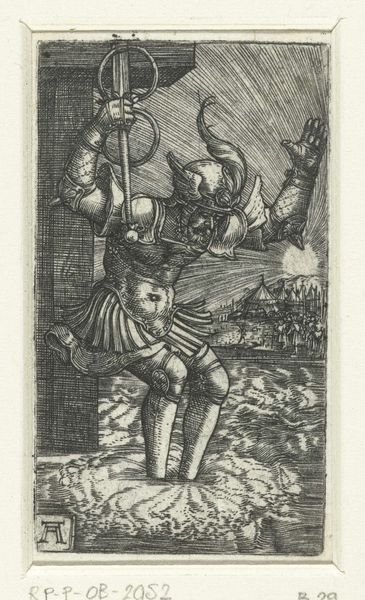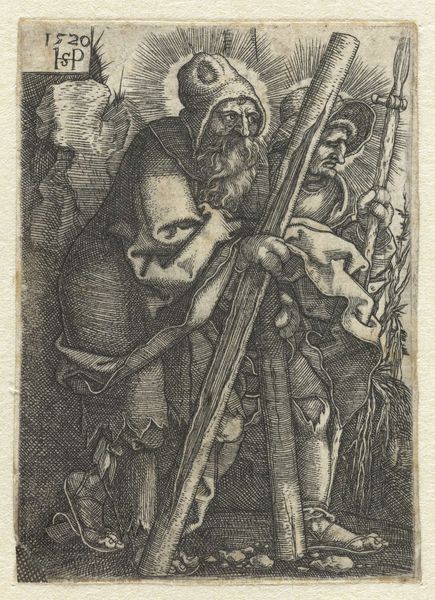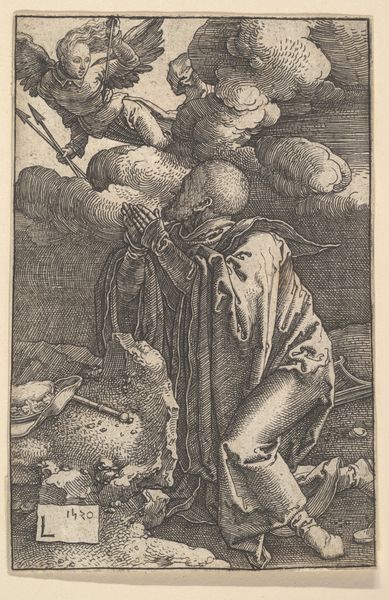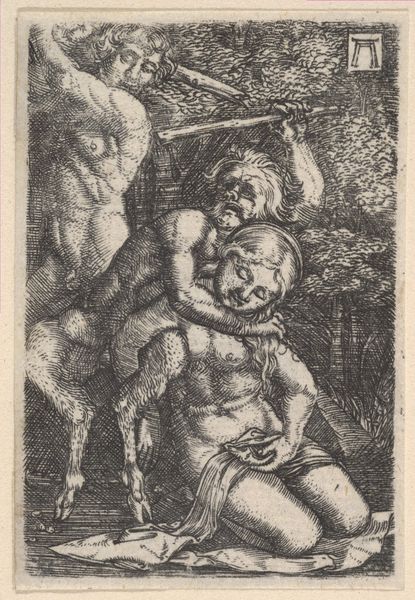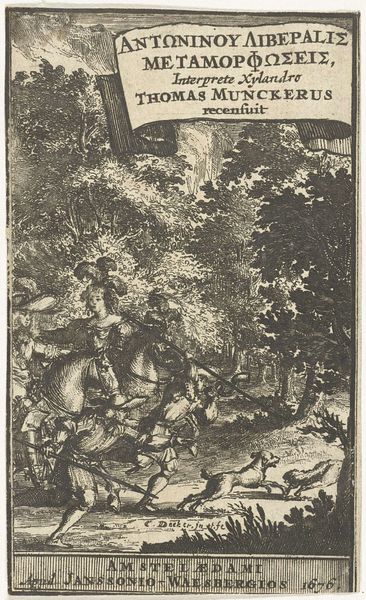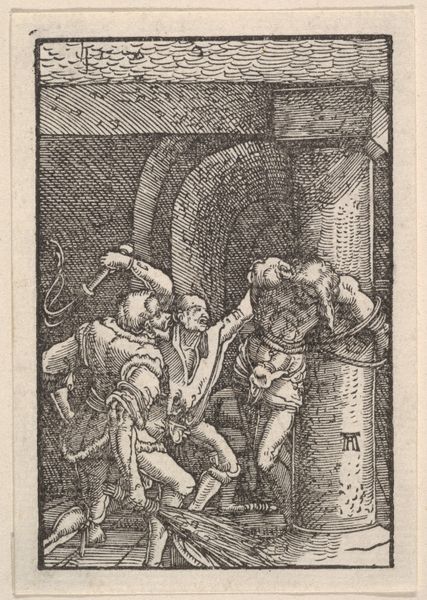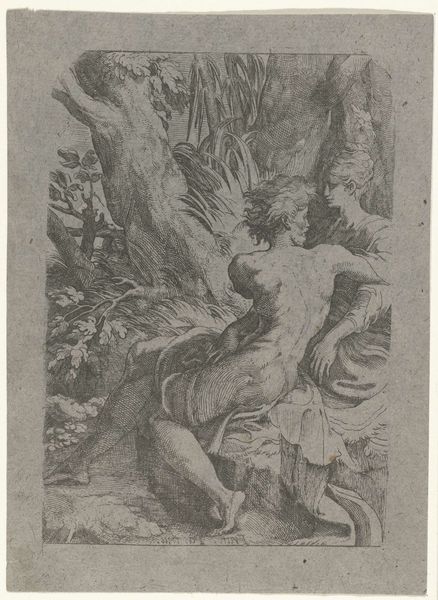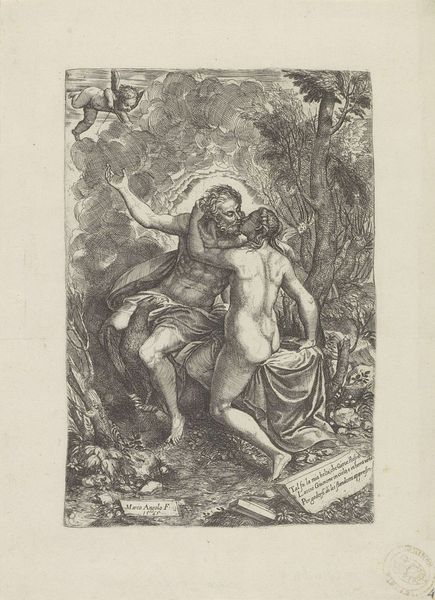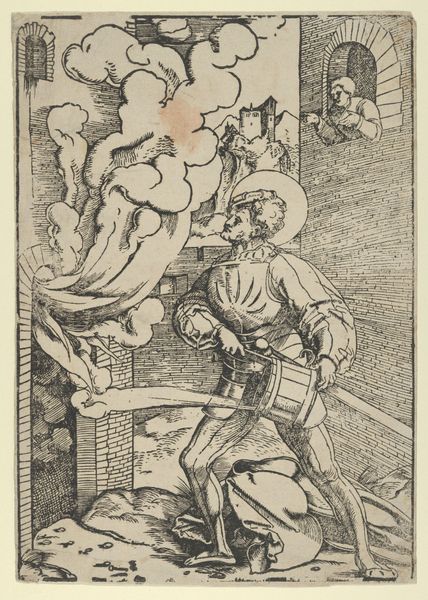
print, engraving
#
narrative-art
# print
#
figuration
#
history-painting
#
northern-renaissance
#
engraving
Dimensions: height 119 mm, width 81 mm
Copyright: Rijks Museum: Open Domain
Editor: Here we have Nicolaas Hogenberg's engraving, "Oedipus and the Sphinx," created in 1524. It’s fascinating to see such a detailed scene rendered with such clear lines. What are your thoughts on this piece? Curator: For me, the real interest lies in the materiality of this engraving itself. The labor involved in producing the plate, the skill required to manipulate the tools, and the social context in which this print would have been consumed all speak volumes. This wasn’t high art for an elite collector. It was a reproducible image, meant for wider distribution, engaging with classical narratives in a new way. Editor: So, you're focusing less on the story of Oedipus and more on how it was made accessible? Curator: Precisely. Consider the printing press itself—a groundbreaking technology that democratized images and stories. How does this relatively inexpensive method of image reproduction influence how individuals engage with these classic narratives, compared to say, seeing it depicted in a one-of-a-kind painting owned by a wealthy patron? The materials dictate accessibility, impacting consumption and thus the artwork’s societal role. Editor: That makes me rethink my initial focus. I was caught up in the narrative, but the engraving process opens up a whole new perspective. Did the engraver have creative freedom, or were they often just copying another artist’s composition? Curator: The level of artistic interpretation varies greatly. Often these prints served a crucial role in disseminating designs and ideas. Understanding the relationships between artists, printmakers, and their patrons sheds light on the flow of creative ideas during this period. Furthermore, we should not forget to account for issues related to consumption. To whom were these available? And what purposes were such engravings meant to serve? Were they meant to serve as domestic ornamentation? Editor: I hadn't considered it as a form of visual communication so broadly distributed. Now, the seemingly simple lines of the engraving feel much more complex, connected to a wider system of production and access. Curator: Exactly. And hopefully now, with a more informed consideration, we’ve recognized that this is no ordinary engraving.
Comments
No comments
Be the first to comment and join the conversation on the ultimate creative platform.
